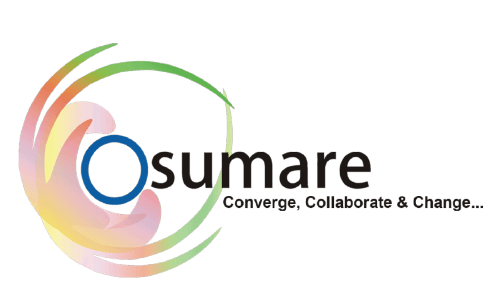If you’re running a website, you probably know that SEO (Search Engine Optimization) is crucial. But how do you create an SEO strategy that actually works? Without a clear plan, you might be wasting time and resources without seeing real results. In this guide, we’ll break down the steps to build an effective SEO strategy that helps you rank higher in search engines and attract more organic traffic.
Also Read:
Understanding SEO Basics
On-Page SEO
On-page SEO refers to optimizations you make directly on your website. This includes keyword usage, high-quality content, title tags, meta descriptions, and internal linking.
Off-Page SEO
Off-page SEO focuses on building authority through backlinks, social media engagement, and brand mentions from external sources.
Technical SEO
Technical SEO ensures your website is structured properly for search engines to crawl and index. This includes improving site speed, fixing broken links, and ensuring mobile responsiveness.
Setting SEO Goals
Defining Your Business Objectives
Before diving into SEO, determine what you want to achieve. Are you looking to increase website traffic, generate leads, or boost sales? Your goals will shape your SEO approach.
Aligning SEO with Marketing Goals
SEO should complement your overall marketing plan. If your business focuses on e-commerce, optimizing product pages should be a priority. If you run a blog, content marketing should be the main focus.
Conducting Keyword Research
Importance of Keywords
Keywords are the foundation of SEO. They help search engines understand your content and connect you with users searching for relevant topics.
Using Keyword Research Tools
Use tools like Google Keyword Planner, Ahrefs, or SEMrush to find relevant keywords with high search volume and low competition.
Analyzing Competitors
Identifying Competitors
Search for your target keywords and see which competitors rank on the first page of Google.
Learning from Their SEO Strategies
Analyze their content, backlink profiles, and on-page optimization to identify what they’re doing right.
Optimizing On-Page SEO
Title Tags and Meta Descriptions
Craft compelling and keyword-rich title tags and meta descriptions to improve click-through rates (CTR).
Proper Use of Header Tags
Use H1, H2, and H3 tags to structure your content for better readability and SEO ranking.
Image Optimization
Compress images, use descriptive file names, and add alt text to improve image SEO.
Enhancing Off-Page SEO
Building Quality Backlinks
Earn links from high-authority websites to boost your site’s credibility and rankings.
Leveraging Social Media for SEO
While social signals don’t directly affect SEO rankings, an active presence can drive traffic and engagement.
Technical SEO Improvements
Site Speed Optimization
A slow website can hurt rankings. Use tools like Google PageSpeed Insights to identify speed issues.
Mobile-Friendliness
Since Google prioritizes mobile-first indexing, ensure your website is responsive and loads well on mobile devices.
Fixing Broken Links
Broken links harm user experience and SEO. Regularly check for and fix broken links using tools like Screaming Frog.
Content Marketing for SEO
Creating High-Quality Content
Well-researched, valuable, and engaging content is the backbone of SEO. Focus on solving problems and answering questions for your audience.
Importance of Content Updates
Regularly update old blog posts to keep them relevant and maintain their rankings.
Local SEO Strategies
Google My Business Optimization
Claim and optimize your Google My Business profile to enhance local visibility.
Local Citations and Reviews
Encourage satisfied customers to leave positive reviews and list your business in online directories.
Measuring and Tracking SEO Performance
Using Google Analytics
Track traffic sources, user behavior, and conversions to measure SEO success.
Monitoring Keyword Rankings
Use rank tracking tools to monitor keyword performance and make necessary adjustments.
Common SEO Mistakes to Avoid
Keyword Stuffing
Using too many keywords unnaturally can harm your rankings. Keep keyword usage natural and user-friendly.
Ignoring Mobile Optimization
Many users browse on mobile, so neglecting mobile-friendliness can lead to lost traffic.
SEO Trends for the Future
AI and SEO
Artificial intelligence is shaping how search engines rank content. Keep up with AI-driven SEO strategies.
Voice Search Optimization
With the rise of voice assistants, optimizing for conversational search queries is crucial.
Conclusion
Creating an effective SEO strategy requires a mix of research, optimization, and continuous improvement. By understanding your goals, optimizing your content, and staying updated on SEO trends, you can build a strong online presence and drive organic traffic. Start implementing these strategies today and watch your website climb the search engine rankings!
FAQs
1. How long does it take to see SEO results?
SEO is a long-term strategy. It usually takes 3-6 months to see significant results, depending on competition and effort.
2. What are the best free SEO tools?
Some of the best free SEO tools include Google Keyword Planner, Google Analytics, Google Search Console, and Ubersuggest.
3. Is SEO better than paid advertising?
SEO provides long-term organic traffic, while paid ads deliver instant results. A combination of both is ideal for maximum visibility.
4. How often should I update my website for SEO?
Regular updates (at least once a month) help maintain relevance and rankings. Fresh content signals to search engines that your site is active.
5. Can I do SEO myself, or do I need an expert?
You can start SEO on your own with research and practice, but for advanced strategies, hiring an expert can be beneficial.
Please don’t forget to leave a review.

